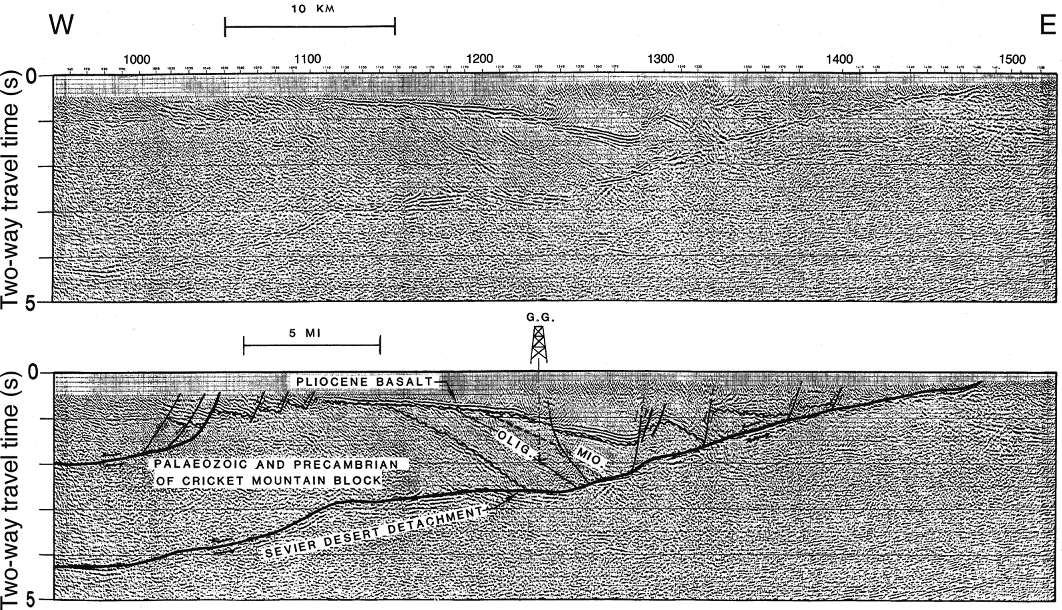Character, Timing and Origins of the Late Neoproterozoic Shuram-Wonoka Carbon Isotope Excursion and Associated Paleocanyons in South Australia
New research is under way in the Neoproterozoic, with particular reference to the character, timing and origins of the enigmatic Shuram-Wonoka carbon isotope excursion in the Flinders Ranges of South Australia. The project is being undertaken by Sarah M. Giles for her Ph.D. (2018-2023). Research in June-August, 2019 focused on the origin of kilometer-deep buried canyons with which the isotopic anomaly is intimately associated; and pilot sampling of carbonate rocks to test competing explanations for observed isotopic variations, and of sandstones for U-Pb detrital zircon geochronology and 40Ar/39Ar glauconite geochronology bracketing both the excursion and the paleocanyon level.

COCORP Utah Line 1 from Von Tish et al. (1985)
See the Scientific Drilling workshop report.
[download PDF 1.0 MB]
Testing the Extensional Detachment Paradigm: A Borehole Observatory in the Sevier Desert Basin
I am lead proponent for an International Continental Scientific Drilling Program (ICDP) initiative to test the extensional detachment paradigm in the Sevier Desert basin, Utah. A priority in 2019-20, in conjunction with Prof. M. Beatrice Magnani at Southern Methodist University, is to seek funds to acquire geophysical data to evaluate the character of the sub-Tertiary contact, and to provide 3-D context for a coring project at the ARCO Hole-in-Rock #1 well.
We continue to work at several other locations in the Basin and Range Province: the Death Valley region of eastern California; adjacent parts of Nevada, Arizona and Utah; and southeastern Idaho.
Geochronologic Tests of Scottish Caledonide Tectonics
As an outgrowth of an ACS-PRF project (2015-2018) to identify the source of the late Silurian–Devonian Old Red Sandstone of Scotland using 40Ar/39Ar mica geochronology, we are seeking new funds to re-evaluate competing interpretations of the tectonic assembly of the Grampian and Midland Valley terranes and superimposed successor basin using a combination of geochronological and geochemical approaches in a field-based context. The project is being spearheaded by Michael J. DeLuca as part of his Ph.D. research (2016-2020).
Stratigraphic Response to Deformation and Sea-Level Change in the Gulf of Suez, Egypt
The Gulf of Suez, Egypt provides a unique opportunity for evaluating how sedimentation responds to crustal deformation and sea-level change in a setting in which both are known to have been important. A project currently under way in collaboration with Ph.D. student, Raed Badr and Dr Ahmed El-Barkooky at the University of Cairo involves physical stratigraphic and structural mapping, sedimentology, Sr isotopic dating, and biostratigraphy to investigate how patterns of sedimentation and erosion relate to the propagation of faults and growth of folds, the tilting of fault blocks, and independently quantified sea-level change during the early Miocene.